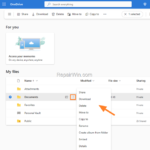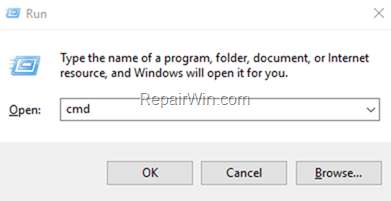The 0x80071129 error “The tag present in the reparse point buffer is invalid”, may appear when you try to delete a local OneDrive folder or file, or after selecting the OneDrive option “Always keep on this device”. In both cases, the error occurs because the local OneDrive folder/file is corrupted, resulting in Windows not being able to access it.
In this guide, you will find several methods to fix the following errors when deleting a local OneDrive folder or file, in Windows 10/11:
- “The tag present in the reparse point buffer is invalid’ (0x80071129)
- “Cannot remove Folder or File. The Directory is not Empty”
- “Folder Access Denied. You need permission to perform this action”
How to FIX: Cannot Remove a Local OneDrive Folder/File in Windows 10/11.
Method 1. Check and Repair Disk Errors.
The first method to solve the mentioned problems, is to check the drive C: for errors and to repair them:
1. Open Command Prompt as Administrator. To do that:
1. Press the Windows
+ R keys to open the ‘Run’ command box
2. Type CMD and then press CTRL + SHIFT + ENTER.
2. At command prompt give the following command to repair your disk and press Enter.
- chkdsk C: /R
3. Press the Y key to schedule the checking at the next restart.
4. Restart your computer.
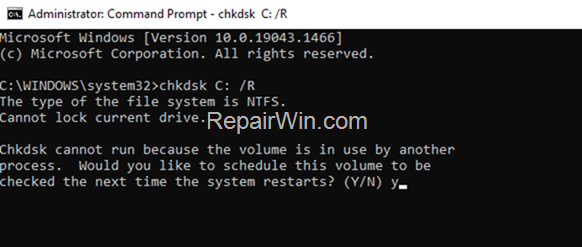

5. Now wait for the disk check process to finish. (it will take several hours).
6. When the check disk process is completed, try to delete the folder/file.
Method 2. Stop Syncing, & Delete Corrupted File.
The next method to remove a corrupted OneDrive folder/file from the local drive, is to stop the syncing of the folder that contains the corrupted folder/file in OneDrive settings, and then to delete the local copy of the file/folder.
1. Click the OneDrive icon on the taskbar and open the OneDrive Settings.
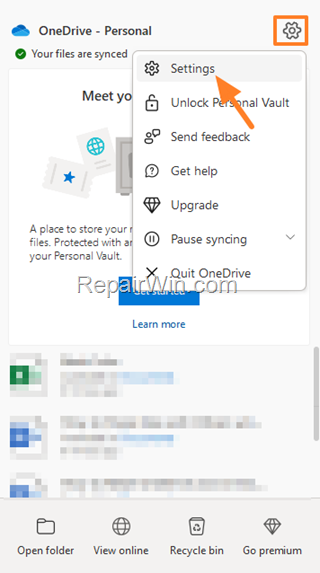

2. At the Account tab, click Choose Folders.
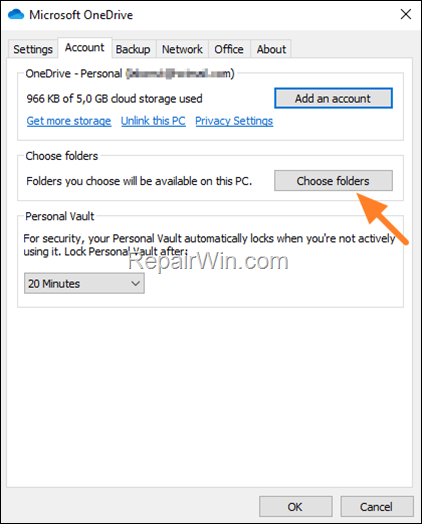

3. Uncheck the folder that contains the corrupted folder/file and click OK (e.g the “Documents” folder, in this example).
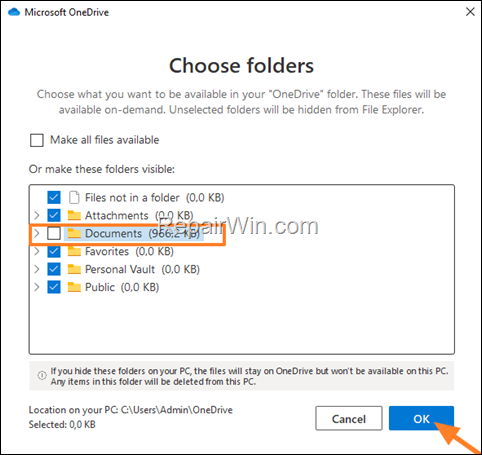

5. Now, proceed and delete the local copy of the corrupted folder/file.
6. Finally, navigate again to OneDrive Settings > Account > Choose Folders and recheck the unchecked folder, to re-enable the syncing of it.
Method 3. Delete OneDrive Folder/File Online and then Locally.
If you still unable to delete a corrupted OneDrive folder/file, because of “The tag present in the reparse point buffer is invalid” error, try to first delete the damaged file/folder from the online OneDrive folders, and then to delete it from the local disk. To do that:
1. Click the OneDrive icon on the taskbar and click View Online.
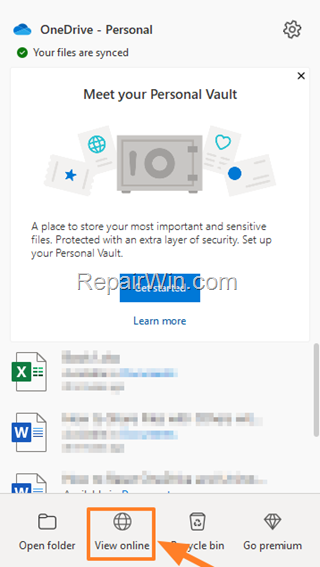

2. After opening OneDrive in your browser, click again at OneDrive icon and from the Settings, Pause Syncing or Quit OneDrive.
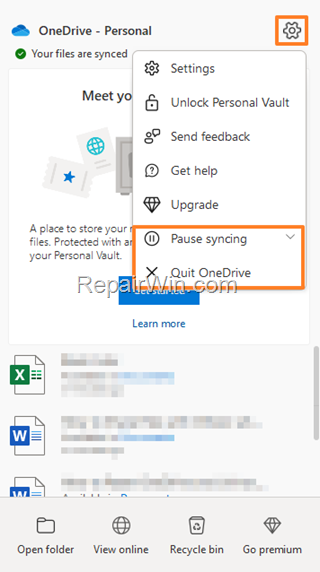

3. Then, in the online OneDrive files, select and Delete the corrupted folder/file (if you need the folder/file, first Download it locally).
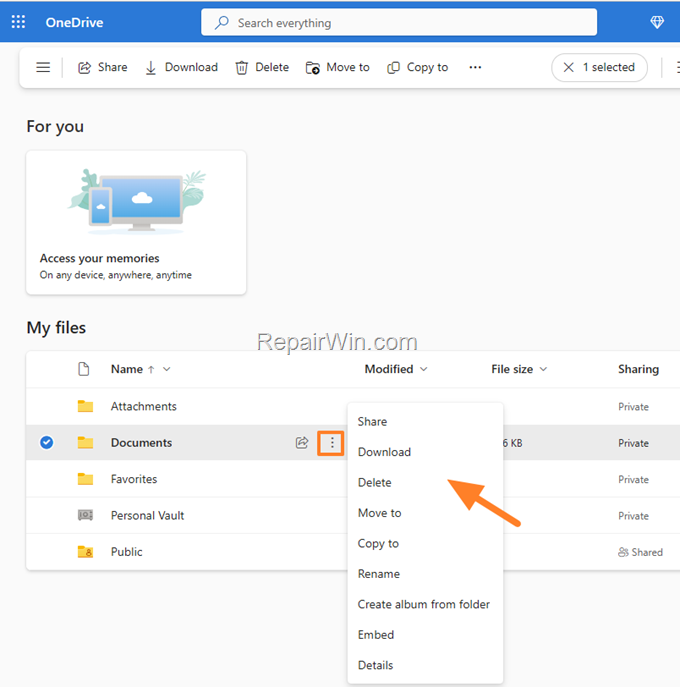

3. When done, proceed and delete the corrupted folder/file from the local disk. *
* Note: If you still not delete the file, try to remove it from command prompt or skip to next method.
4. Finally, from the OneDrive icon, click Settings and Start Syncing. (or restart your PC).
Method 4. Delete File or Folder from Command Prompt.
If you still cannot remove a local OneDrive file/folder in Windows 10/11, due to error “Cannot remove Folder or File: The tag present in the reparse point buffer is invalid”, try to take the ownership of the folder/file and then delete it from the command prompt.
1. Open Command Prompt as Administrator
2. At command prompt give the following command to close OneDrive (if it’s running):
- taskkill /f /im OneDrive.exe


3. Then give one of the below commands, according your case:
A. To delete a FOLDER: *
- takeown /F “FolderName” /r /d y
- icacls “FolderName” /grant Username:F /t
- rd “FolderName” /S /Q
* Notes:
1. Replace the “FolderName” with the full path and the name of the folder that you cannot delete.
2. Replace the “Username” with the username of the Administrator account.e.g: if you want to delete the “Demo” folder (and its subfolders and files) under the “C:UsersUser1OneDriveDocuments” directory and your Administrator account name is “User1”, then the commands should be:
- takeown /F “C:UsersUser1OneDriveDocumentsDemo” /r /d y
- icacls “C:UsersUser1OneDriveDocumentsDemo” /grant User1:F /t
- rd “C:UsersUser1OneDriveDocumentsDemo” /S /Q
B. To delete a file: *
- takeown /F “Filename“
- icacls “Filename” /grant Username:F
- del “Filename“
* Notes:
1. Replace the “Filename” with the full path and the name of the file that you cannot delete.
2. Replace the “Username” with the username of the Administrator accounte.g. if you want to delete the “Example.doc” file under the “C:UsersUser1OneDriveDocumentsDemo” directory and your Admin account name is “User1”, then the commands should be:
- takeown /F “C:UsersUser1OneDriveDocumentsDemoExample.doc”
- icacls “C:UsersUser1OneDriveDocumentsDemoExample.doc” /grant User1:F
- del “C:UsersUser1OneDriveDocumentsDemoExample.doc”
4. When done, restart your PC.
Method 5. Delete Online OneDrive File & Local File in Safe Mode.
The next method to solve the “tag present in the reparse point buffer is invalid” error in OneDrive, is to delete first the online OneDrive file and then the local copy in Windows Safe mode.
1. Click the OneDrive icon on the taskbar and click View Online.
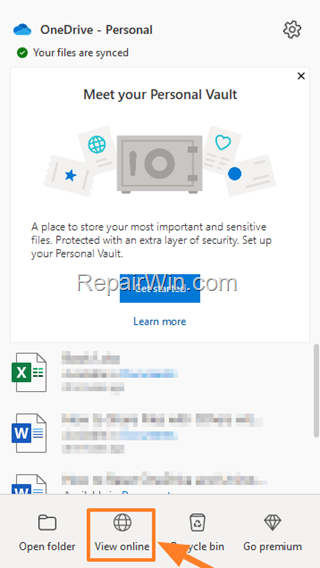

2. After opening OneDrive in your browser, click again at OneDrive icon and from the Settings select Quit OneDrive.
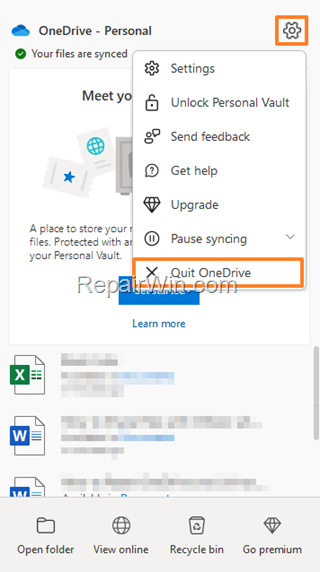

4. Now, locate the folder/file that you cannot remove from the local disk, and Delete it. (if you need the folder/file first Download it locally).


5. Now, press the Windows ![]()
![]() + R keys to open the run command box.
+ R keys to open the run command box.
6. Type msconfig and press Enter.
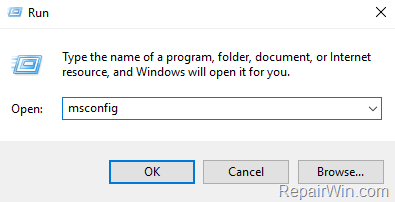

7. At Boot tab select the Safe Boot option, then click OK and restart your computer.
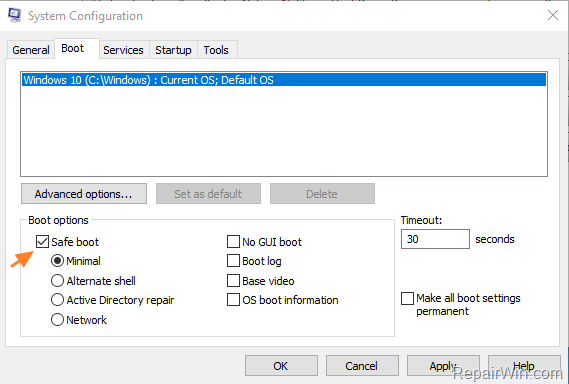

8. In Safe Mode, open Windows Explorer and delete the corrupted folder/file from the local disk.
9. After removing the file, run the ‘msconfig’ tool again and at the General tab, check the Normal startup and click OK.
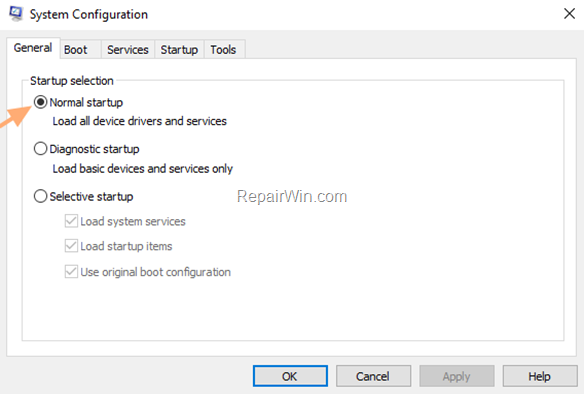

10. Restart your computer.
Method 6. FIX “tag present is invalid” by Repairing Windows System Files.
Another method to resolve the “The tag present in the reparse point buffer is invalid” error, is to repair Windows by using the DISM and SFC commands.
1. Open Command Prompt as Administrator.
2. In command prompt give the following command and press Enter:
- DISM.exe /Online /Cleanup-image /Restorehealth


3. When the DISM operation is completed, type the following command and hit Enter:
- sfc /scannow


4. Now wait until the System File Checker repairs the Windows System Files.
5. When this done, restart your computer and delete the folder/file.
That’s all folks! Which method worked for you?
Please leave a comment in the comment section below or even better: like and share this blog post in the social networks to help spread the word about this solution.


